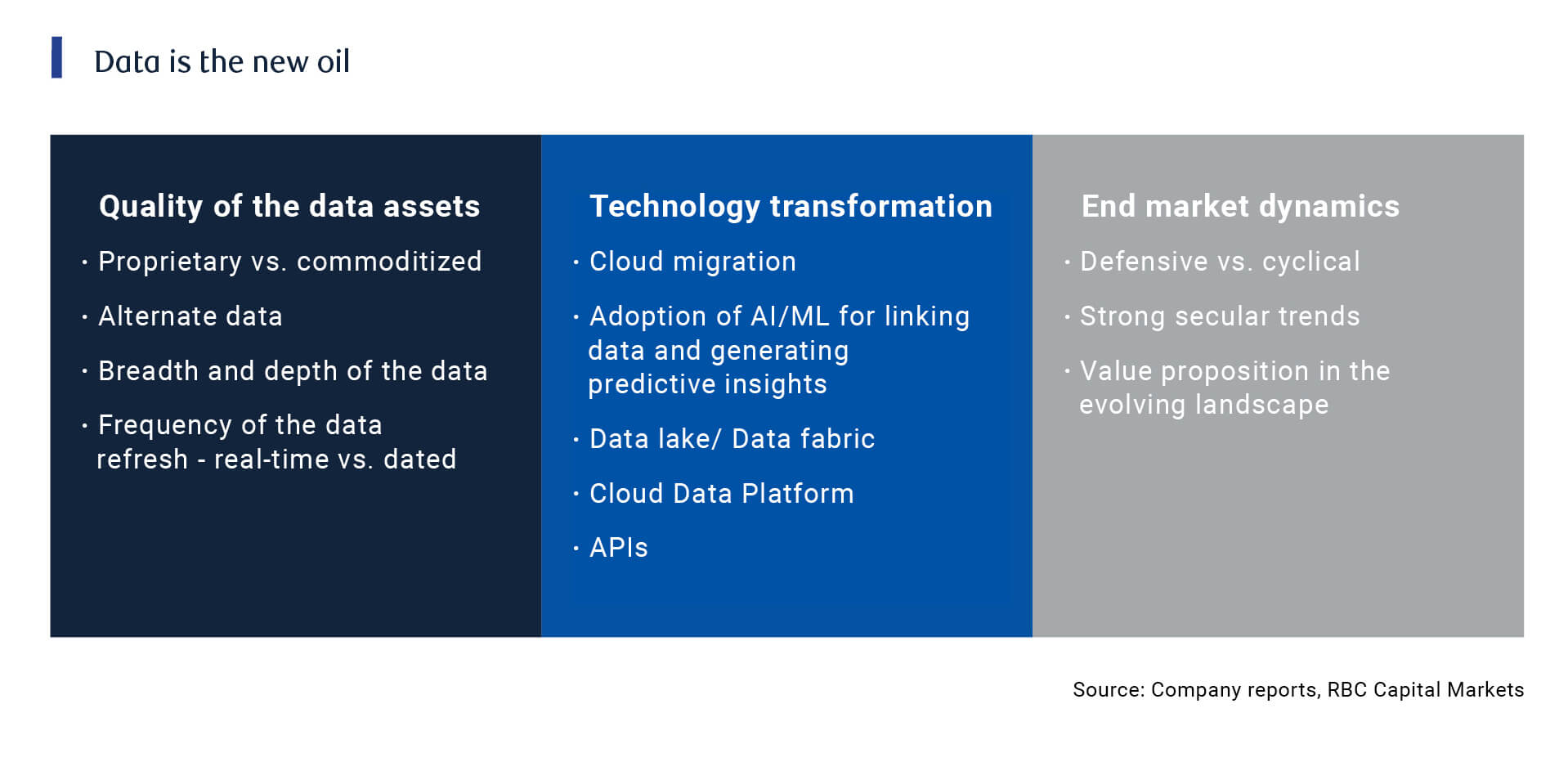Key Takeaways
- Today’s businesses are no longer in the phase of assessing AI’s abilities, they’re putting the concept into action.
- Automation is a necessity for filling the global talent shortage, ultimately leading to increased adoption, and a reshaping of the enterprise.
- AI-enabled automobiles are arguably a greater step change than electrification and will create new revenue streams in data utilization and media consumption.
- Big data and the use of AI to recognize trends will require additional capacity for data storage, raising issues of cost and sovereignty.
AI becomes mission critical
Today, an increasing portion of our digital experience is powered by AI that gets smarter with more usage and with more data. Over time, technology will evolve from AI-enabled applications to true general purpose AI, which we view as the fifth industrial revolution.
But even at today’s levels, AI throws up challenges as well as opportunities. Data privacy, automation and job loss, fairness, equity, and security are all topics for debate in this arena. While general purpose AI is some way off, we need to wrestle now with ethical questions about what may happen when AI systems can communicate with each other and potentially exceed human intelligence.
Automation and the citizen developer
As AI gets smarter, low-code systems will transfer the power of programming from developers to everyday employees. Automation will become an important supplement for shortages in skilled human capital as “human tasks” move up the value chain with manual repetitive tasks increasingly being accomplished by machines.
“The skilled labor gap is expected to grow by 20-30% annually over the next several years. Closing this gap will require maximizing the efficiency of workers as well as retraining and reallocating resources.”
Matt Hedberg
Software Analyst, RBC Capital Markets
Outside of basic job scheduling and workflow, automation will take the form of low-code/no-code solutions, which allow citizen developers to create apps and automated processes. We’ll also see increased deployment of robotic process automation (RPA) for the automation and augmentation of repetitive tasks, and augmented intelligence, which combines the skills of computers and humans. A key to both low-code/no-code and RPA is the ability for workers to create tools to make their own work more efficient. These citizen developers can create solutions to their own problems, without resorting to highly skilled developer resources.
AI, data and the edge
Transformation of the data lifecycle using cloud applications, AI, machine learning, and RPA will result in improved quality, depth and breadth of data. Data accuracy will continually improve with real-time updates, allowing AI to generate predictive insights while minimizing friction in distributing data. This will result in increased revenue growth from improved customer experience and greater demand for data, and a decrease in the expense of gathering, analyzing and distributing data.

AI also brings a much larger potential change to automotive and ancillary industries than the very necessary step of electrification. Connected, software-enabled vehicles can provide a better, more personalized experience for the customer. But they also have tangible economic benefits to automakers, suppliers, dealers, insurance companies, tech players and other industries. For example, automakers with access to richer data than insurance companies could potentially offer better insurance products.
“We envision a future where a driver could trade data their vehicle is gathering on the environment and passengers in return for a lower cost for that vehicle.”
Joseph Spak
Autos Analyst, RBC Capital Markets
Autonomous vehicles also free up time. There is no longer the need for a driver to pay attention to the road. This could increase work productivity (think of a morning work commute) but in many instances this could mean an emerging opportunity for media. Passengers may want to spend time virtually socializing with friends or family (social media usage and engagement could rise).
The conundrum is where to store all this data. Big data and the use of AI to recognize trends will require additional capacity for data storage, raising issues of cost and sovereignty. Companies will often discard data because of the high costs associated with keeping and transferring the data once stored, while governments debate over which jurisdictions own and have access to data.
Edge computing will play a pivotal role in resolving issues with data sovereignty. With edge computing and storage, a company can make definitive claims regarding where the data exists and how it was collected.
